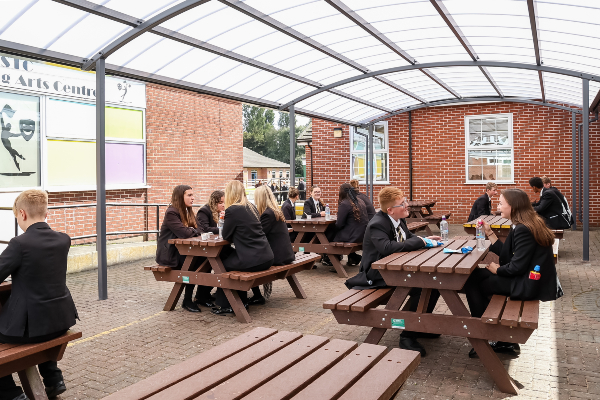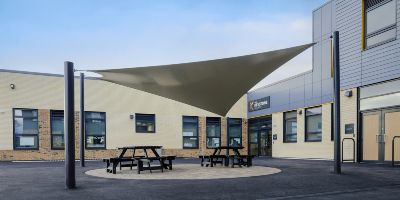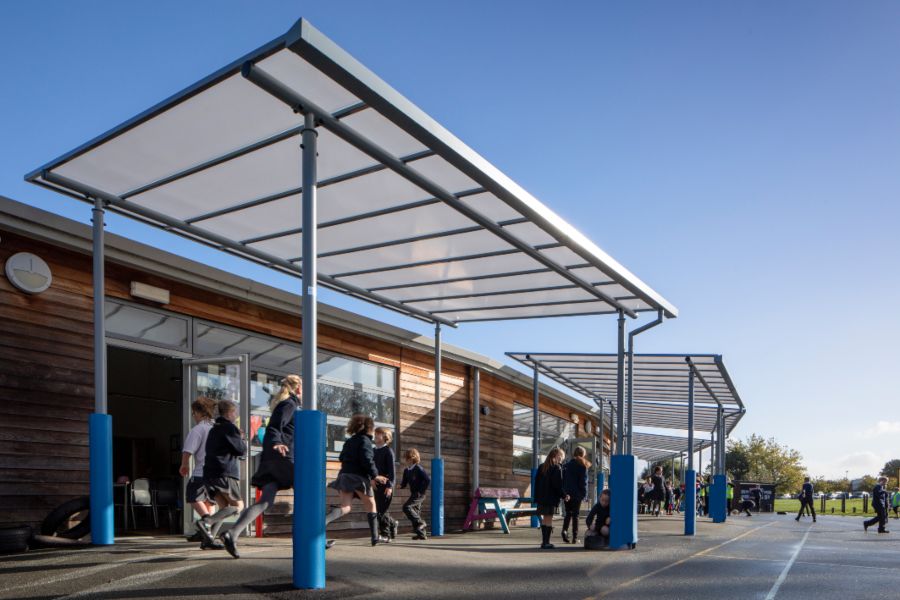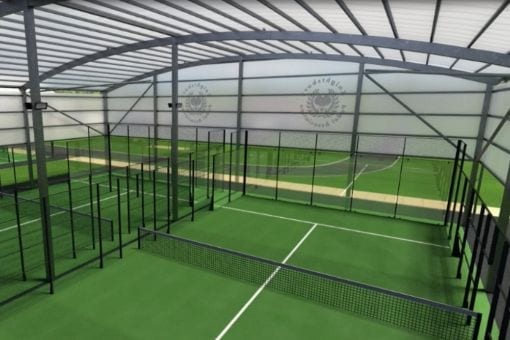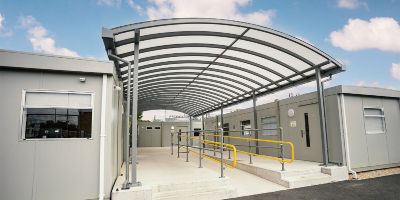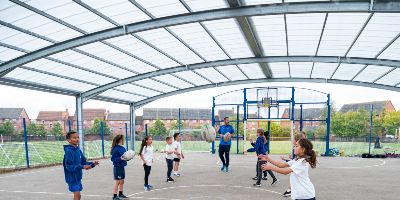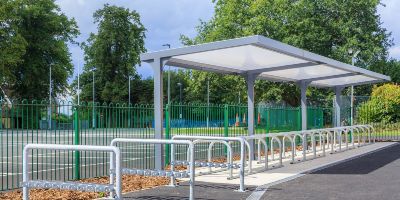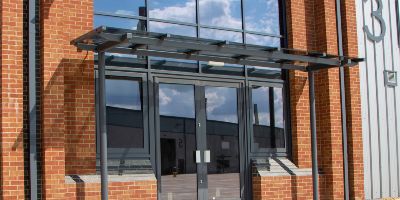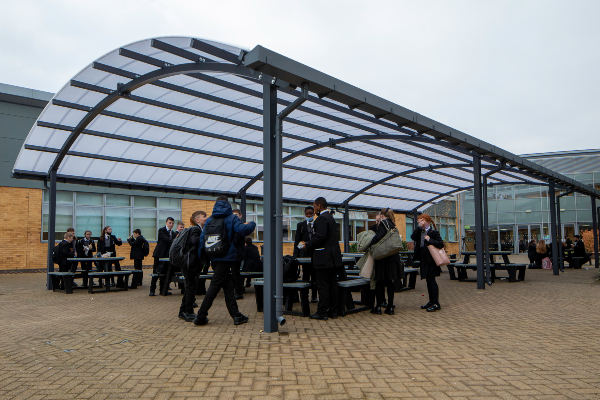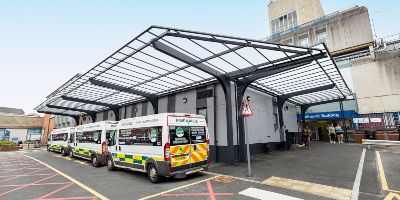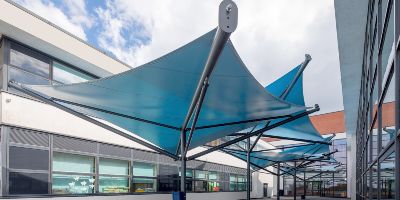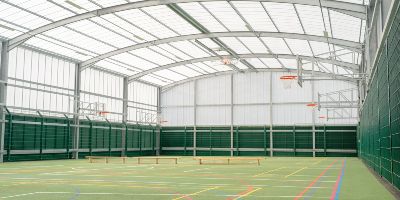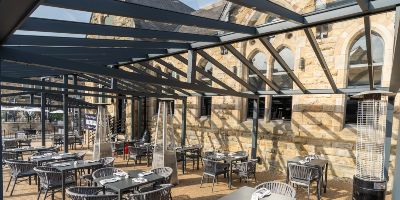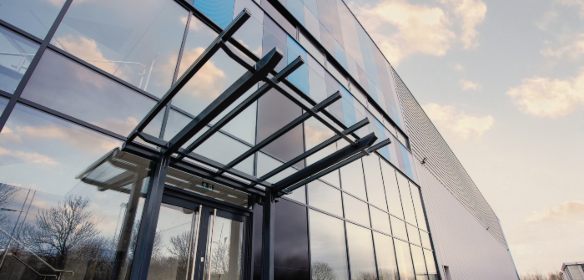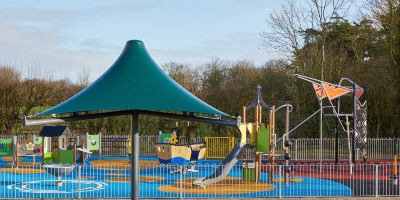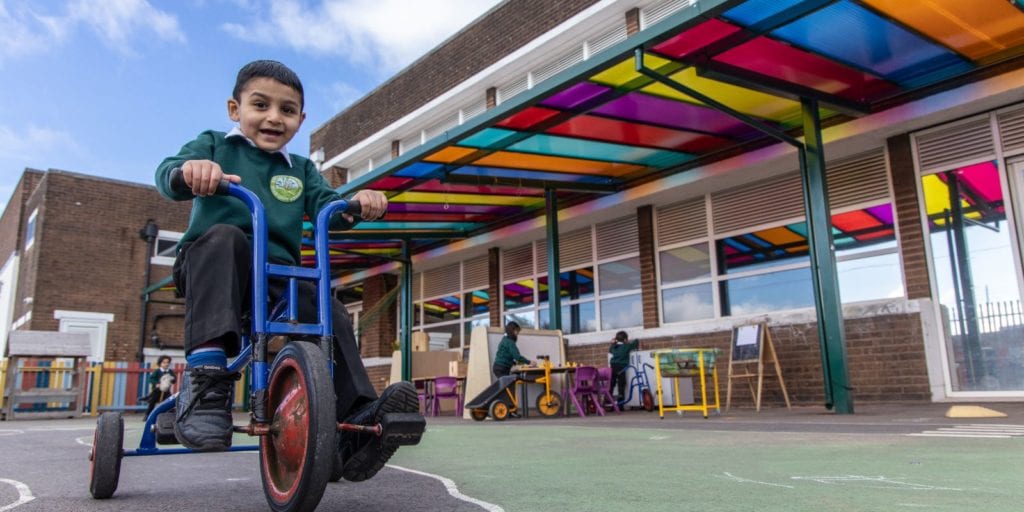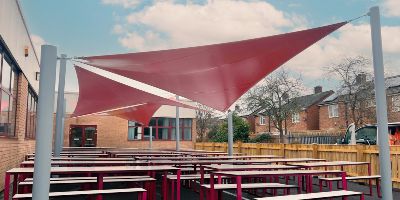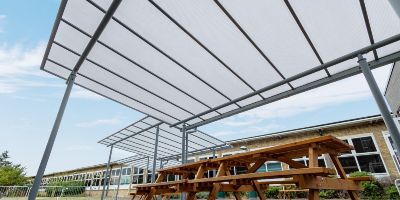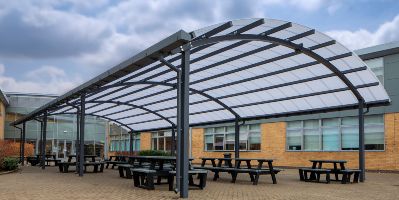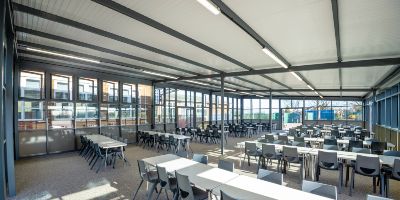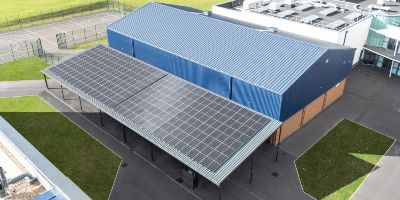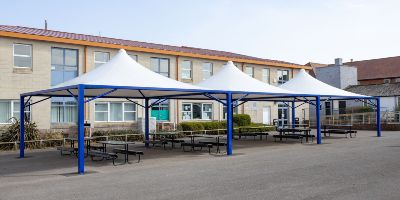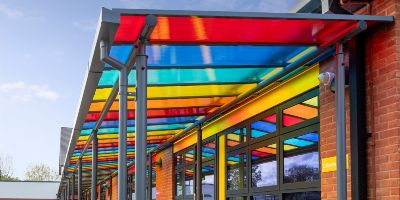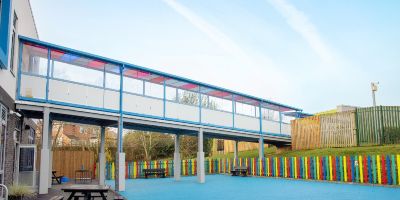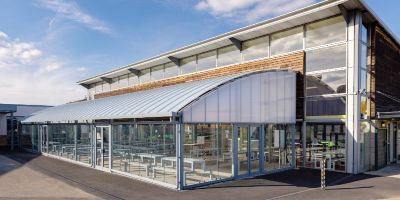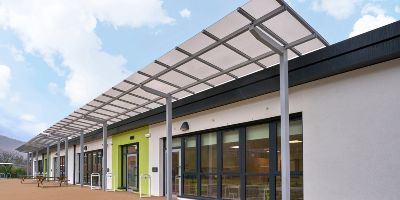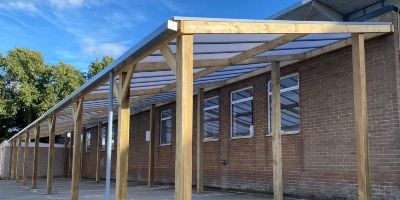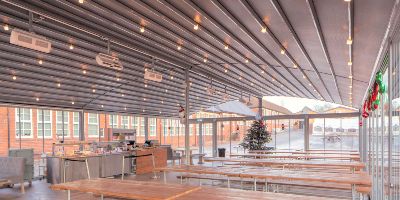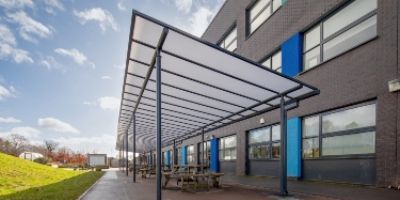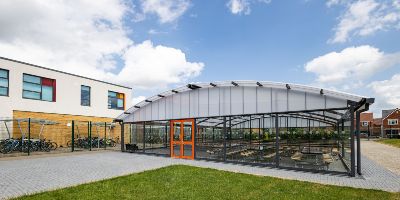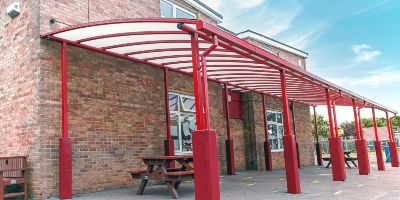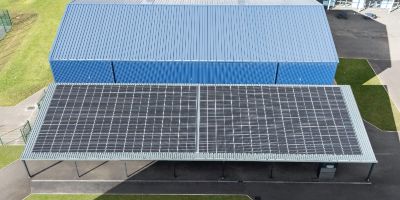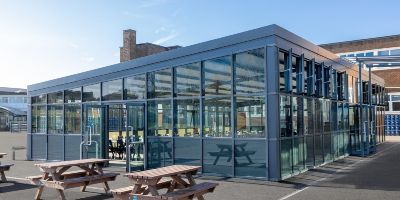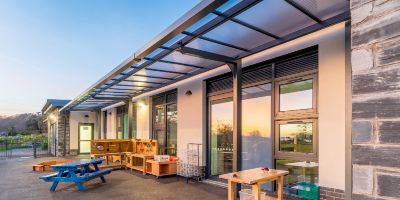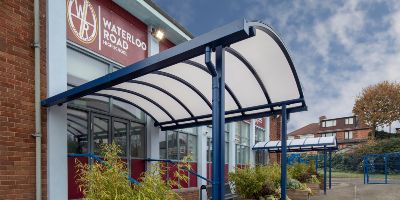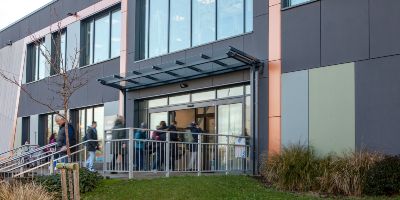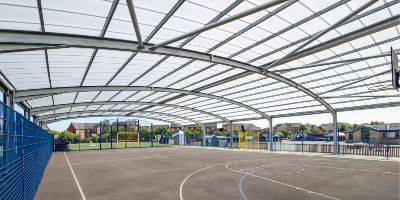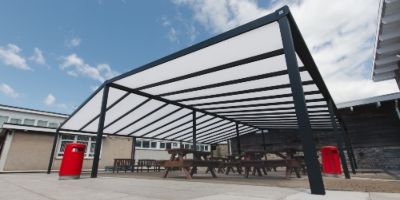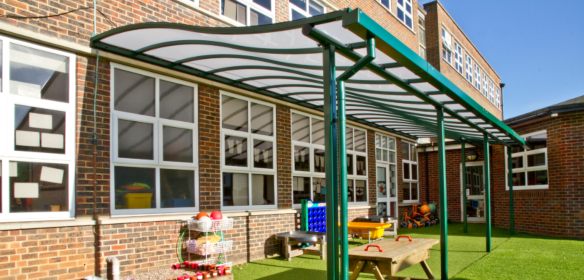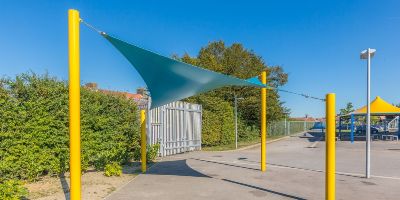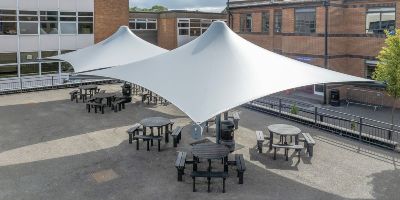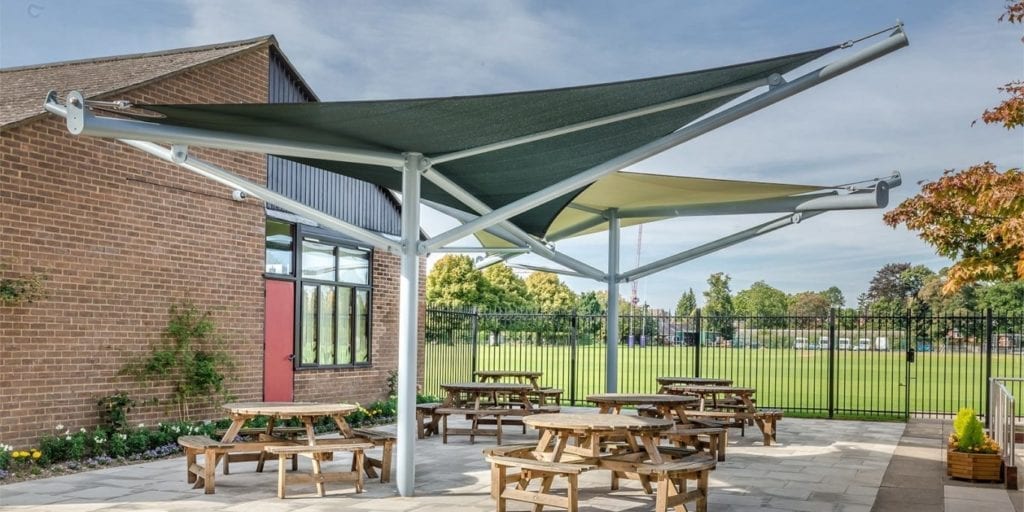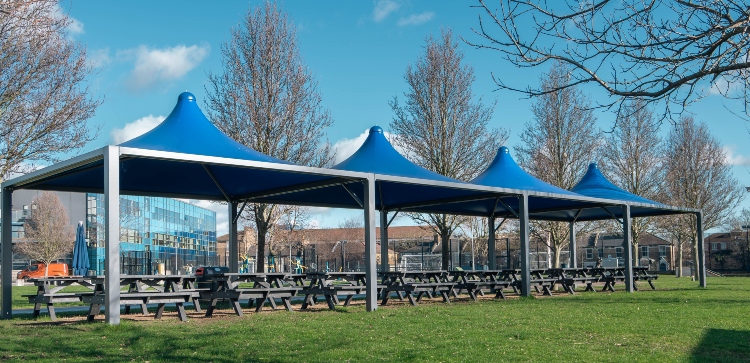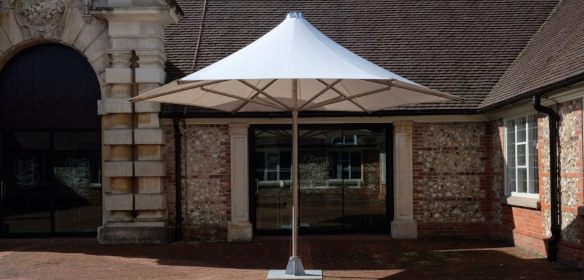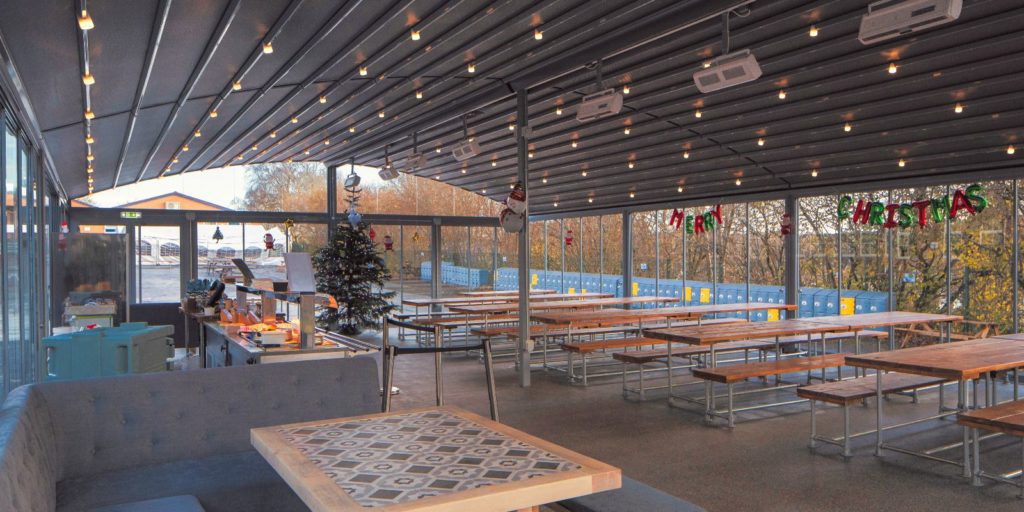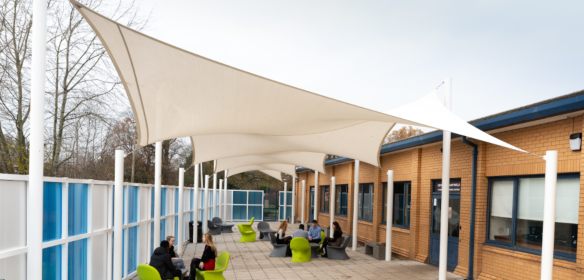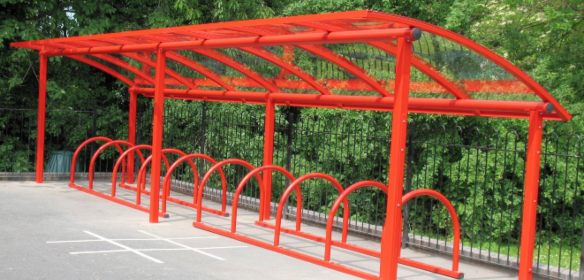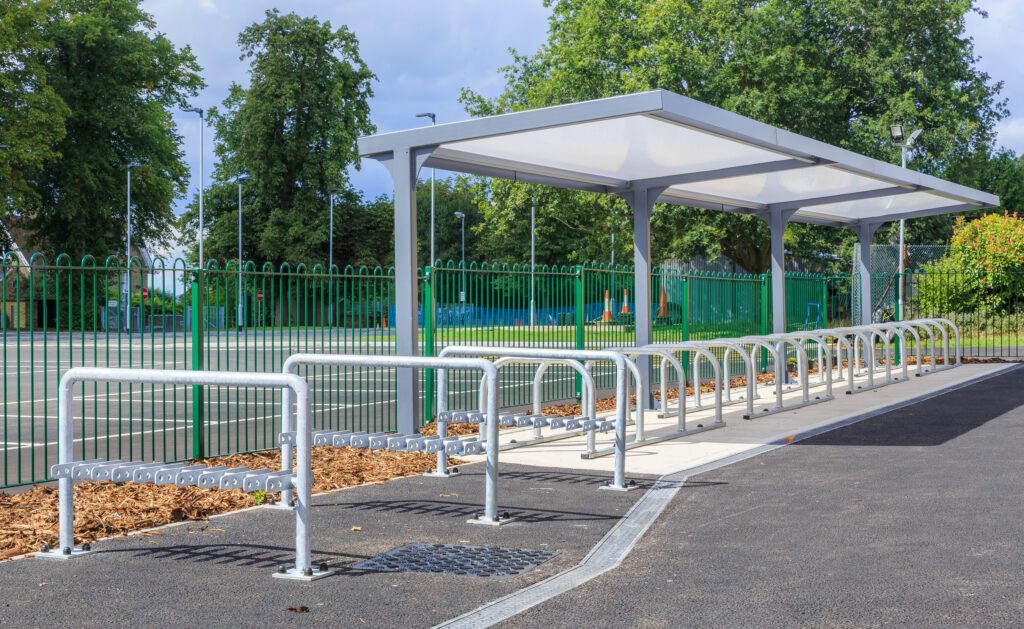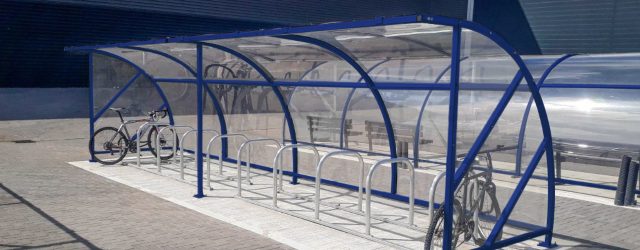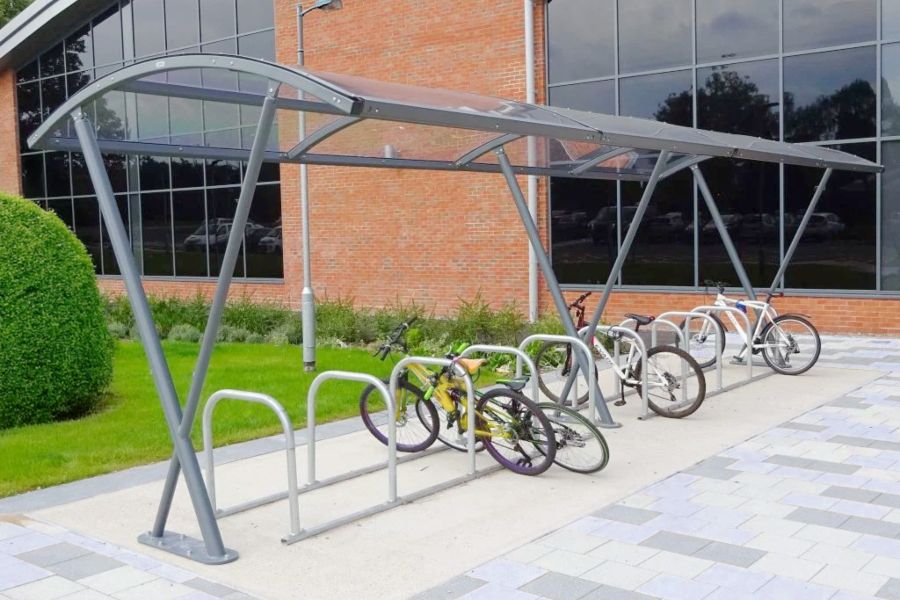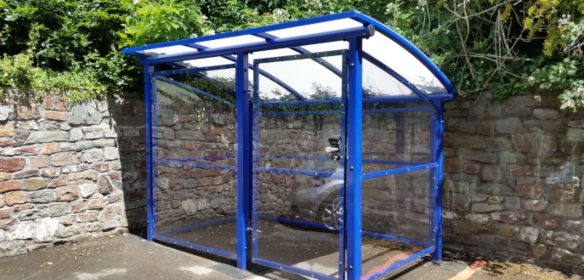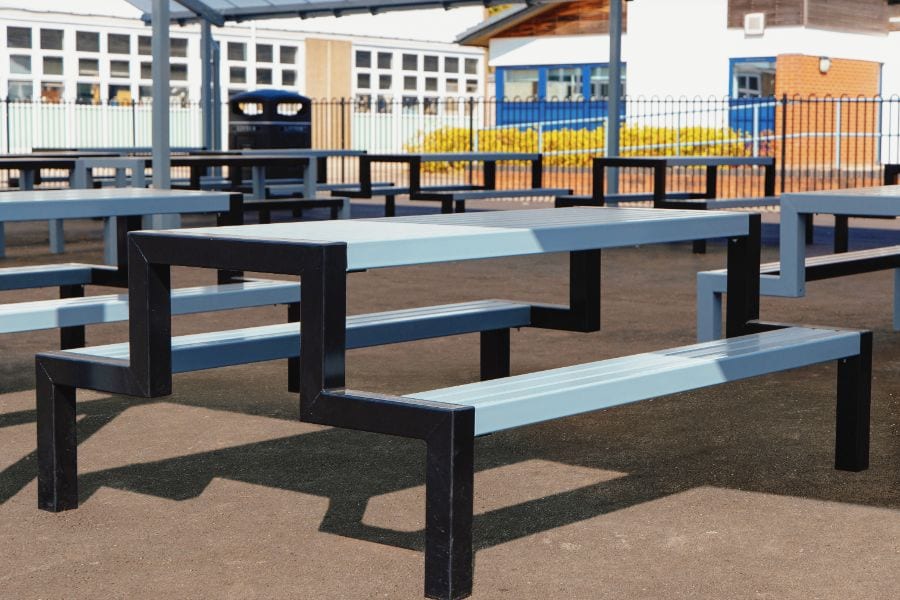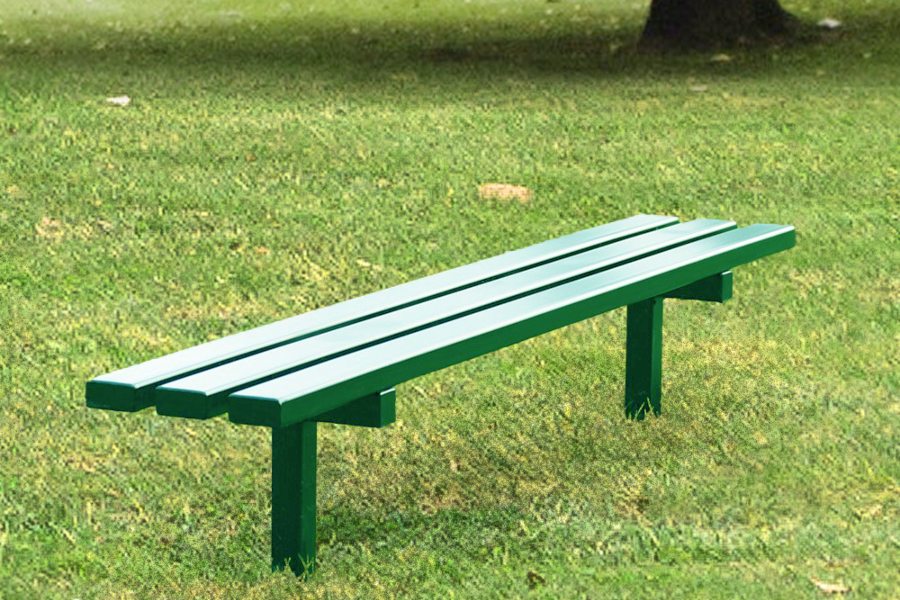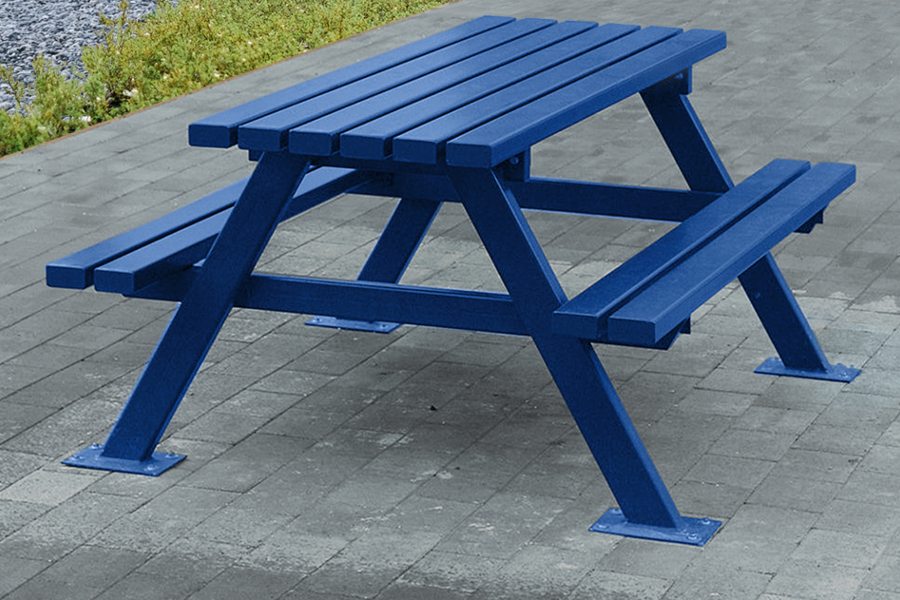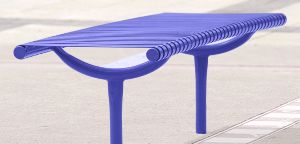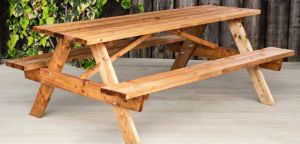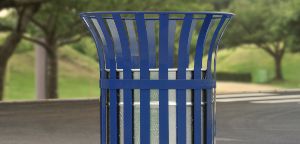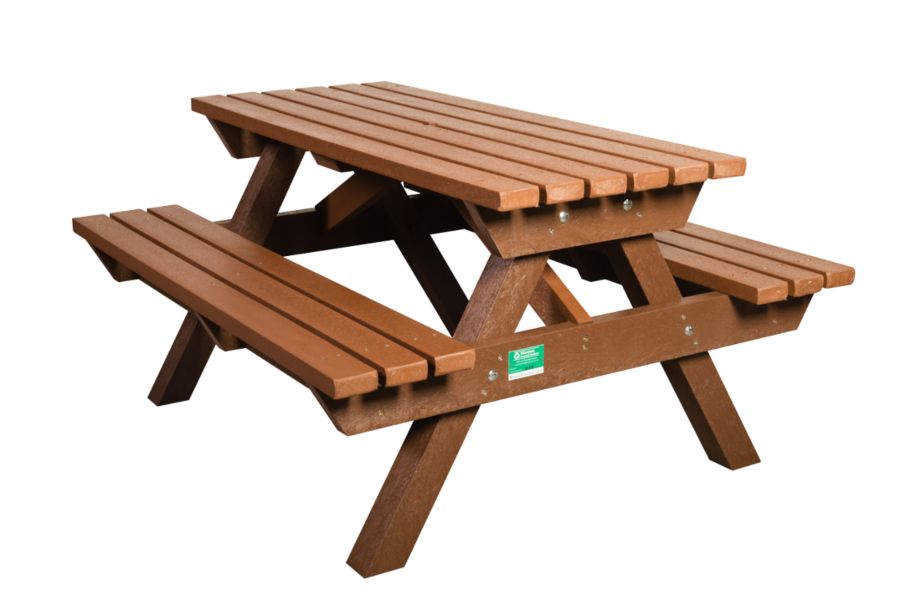
Outdoor Learning and Play Post Covid-19 in Schools
Learning to Return Webinar - Outdoor Learning and Play Post Covid-19
Transcript
Claire
Without further ado I am going to introduce the team today. So we have Mary Jackson who is Head of Education and Communities at Learning through Landscapes. We have Claire Rooney who is the Training Manager, she is based in Scotland, and we have Alex Bright who is the Training and Development Officer. Just to point out before we do begin properly the pictures used within the presentations were taken before lockdown began, so if you think people are bit closer together we haven’t been going out into schools and doing anything naughty okay. So without further ado I will pass you over to Mary.
Mary
Thank you very much Claire. That noise seems to have gone so whether that was the questions I don’t know but hopefully for everybody that sound is better now. Welcome to this webinar on learning to return outdoors. We know that teachers are already in schools and working with groups of children so we hope this will be as helpful for you as it is for those planning on what will happen when more children return to school. We know that there is a jest that the virus is less likely to be transmitted when you’re outside so it makes a lot of sense to go outside as much as you can and all these Departments of Education across the UK are also recommending that outdoor learning is part of your planning and thinking about what you will do when you return. So we hope this will be useful for you as you think about planning with the children you’ve got now or with the children and young people that you will have as we return more to school.
So I am going to start with, if you just bear with me a second, telling you a little bit about, that’s me, I’m Mary Jackson, as Claire said I am Head of Education and Communities. I, like many of my colleagues, I am a teacher by training. I am a secondary teacher. I was a PE teacher originally and I am also a landscape architect. So that’s my background.
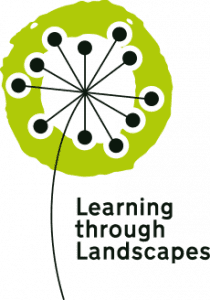 So what about Learning through Landscapes itself or LTL as we are well-known as well. With the UK’s National School Grounds Charity and we’re here to support schools and those who work with them as well across all four nations of the UK and beyond. Our aim is to ensure that all children and young people have regular access to great school grounds for learning, play and nature connection and we are there to make sure that there are adults who can support children and young people when they are outside as well.
So what about Learning through Landscapes itself or LTL as we are well-known as well. With the UK’s National School Grounds Charity and we’re here to support schools and those who work with them as well across all four nations of the UK and beyond. Our aim is to ensure that all children and young people have regular access to great school grounds for learning, play and nature connection and we are there to make sure that there are adults who can support children and young people when they are outside as well.
So for 30 years we’ve worked with schools and early year settings. We’ve worked with teachers, practitioners, with local authorities, academy trusts and national governments, governmental departments as well. In fact we were set up in 1990 by the Department for Education. That was after a research project showed that whilst there were some schools who were doing great things in their school grounds, there were an awful lot of grey and green barren deserts out there, and school grounds not really being used for their full potential so we were set up to make a difference. We are a charity and that’s our aim.
So for 30 years we’ve been working with schools and we’ve been doing that in a number of different ways. Teacher training is just one of them and we’ve also levered in over 25 million pounds into school grounds over the years and we’re very proud of that as well. We are based in the UK, we have offices in England and in Scotland but we also work on projects in Europe. I have worked in the Far East and we are about to head off to Brazil when we can to help schools out there.
We are a founding member of the International School Grounds Alliance and we are working with other partners to find out what they are doing in response to COVID-19 as well. So we are working with partners in Sweden who have been in school the whole time and others who are looking to return just as we are.
One thing that is really important about what we do as a charity is that children are at the heart of what we do, children and young people. As I say we work with early year settings right the way through primary and secondary schools and special schools as well, proves an alternative provision. So children are what matter to us and everything we do focuses around their needs. As I said many of our team, our teachers all come from educational backgrounds, working in schools or working with schools, so we do understand where you’re coming from, as much as we can in this situation. Nobody has been in this situation before so we won’t have all the answers. Some of you will be discovering those answers better than us and we are really keen to share your learning as well.
What makes us a little different than some of the other outdoor learning approaches is that we really start with the curriculum. It’s really key, so we think about what are you having to teach, what are you already doing, how can we engage pupils better, is the outdoor environment a way of doing that? If we’ve got to teach something we need to think about it and can we take it outside? Will it make the learning more memorable? Will we engage children more with that? Will it help pupils understand difficult concepts as they try things out in practical ways? Will children who struggle at the desk or pupils that need stretching, will they find the outdoor environment a better place to learn in? So we do work with teachers and other school staff.
As I said before, many of you will be experienced of teaching outdoors. Some it will be something that is new to you. This may be an opportunity when you are currently working with smaller groups, to think about starting to take your teaching outside, so that when you have more pupils coming back, you’ve built the confidence, you know how it works. It starts with Claire Rooney is going to start the conversation going really with looking at the benefits of using school grounds. So it will take us a little while just to switch the presentations over, if you bear with us, she will be taking the next section on.
Claire
Thank you Mary. So yes my name is Claire Rooney and I am the Training Manager for Learning for Landscapes. So part of my remit is to coordinate the trainings that we offer across 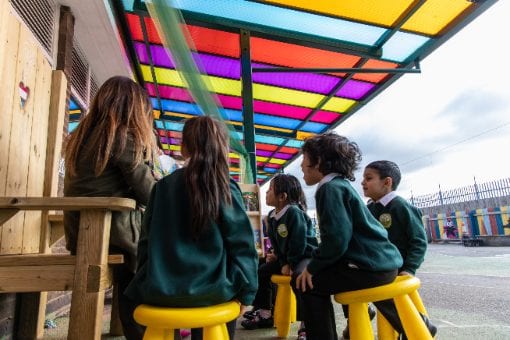 the UK and internationally now as well. As Mary said there, it is very much looking at how we can support teachers of all stages in getting outside using your grounds, your local green spaces, in teaching the curriculum. That is our real raison d’être. It’s how we really believe we can support schools and what I’m going to talk about for the next few slides is what are the benefits of curriculum linked outdoor learning. Really I’ll probably hint at a few opportunities as well for curriculum linked outdoor learning through these slides, but there are multiple benefits. I am talking about a few here and there’s a whole research section on our website where you can go and look and find more information about this evidence as well, and you will receive some information following this webinar as well if you’ve signed up here.
the UK and internationally now as well. As Mary said there, it is very much looking at how we can support teachers of all stages in getting outside using your grounds, your local green spaces, in teaching the curriculum. That is our real raison d’être. It’s how we really believe we can support schools and what I’m going to talk about for the next few slides is what are the benefits of curriculum linked outdoor learning. Really I’ll probably hint at a few opportunities as well for curriculum linked outdoor learning through these slides, but there are multiple benefits. I am talking about a few here and there’s a whole research section on our website where you can go and look and find more information about this evidence as well, and you will receive some information following this webinar as well if you’ve signed up here.
So what are the benefits? So the first one, yes it’s quite a situational benefit at the moment. Yes getting outdoors does certainly give you more space in a time when we are required to social distance as much as possible, but as I say that’s a very situational benefit and there will be different strategies deployed in different settings in order to do this.
So moving on from that space, that space outside your building, fantastic opportunity for letting the children be noisy. I just remember music classes and the headache that you might get after that music class. Well take that music lesson outside. Outdoors, sound dissipates better. So learning can be noisy, so you know give yourself a break and actually go outside with the children and do some of those lessons that maybe do require a little more energetic discussion. The slightly louder voices, the music, the drama. Try them outside.
There’s opportunity as well for being a bit more messy outside. We know that creative learning involves being a bit messy. Learning isn’t tidy. So enable more freedom and creativity and take some of those types of lessons outside as well. Use that space outside for them. If you’ve got a big tarmac space, fantastic opportunity for mark making. Give each child their own piece of chalk, no sharing of the chalk in these times, they’ve got their own little piece, and they can mark make. That could be for poetry. for scale measure estimates. You know you’ve got a big space there, a piece of chalk, there’s a whole range of different curricular linked activities that you can do and we have lots of resources on our website to support you with that and my colleague Alex will tell you more about that. So lots of ways in which space can be to your advantage taking learning outside.
The sensory stimulation of an outdoor space. It gives you an opportunity to apply theory in the real world. So you know those things that don’t sit neatly in one curricular area, like the real world, for example take doing plan to redesign or something like that, you know that would involve some maths because they’re measuring the area and the volume of the planter. There’s some science, they’re looking at what grows, how will it grow there, what does it need in order to grow? There’s an art and design element in the colours they choose, the way they lay out the plants. There could be historical research about the types of plants that they’re planting there. The names of the different plants.
Then then there’s literacy that could be brought into that, instructional language, how do we do this project, how do we do the planting efficiently? You know instruction writing, so it really lends itself to being interdisciplinary which is actually what the real world is. We don’t learn about subjects in isolation from one another. We see how they all connect together. So the outdoors gives a fantastic opportunity, many fantastic opportunities for that. We get the benefit of the weather, not just learning it from a textbook, but we get to actually interact with the real weather in your playground. Measure the rainfall depth, look at the micro climate around the school grounds. There’s a puddle over there on that tarmac, what rate does it evaporate at? Does that puddle in the sunshine evaporate faster than that puddle in the shade? What’s the wind speed, how can we measure that? Where would be the best place to put a wind turbine? You know look at the weather elements in the grounds and see how they can stimulate learning.
All the fantastic sensations that you get from being outside, you feel the wind through your hair, you touch the different textures of different surfaces, you smell stuff, you listen to different sounds, natural and unnatural. They can all be inspiration for creativity as well. There’s actually research from the Curtin University in Australia that children who have been outside and actually in the bush or they also did it in the UK, or been into the woods, they wrote more creatively than those who had done the same poetry activity sat in their class. So it supports attainment, getting outside. It stands to reason if you have the real source material in front of you, it’s going to inspire more creativity.
And then get them stimulated through those simple connections to nature as well. You know the very simple just watching how ants move about, watching the journey of a snail, watching how a flower opens its head and closes its head at different times of the day. I love this quote, it’s from Sobel. Talking to the trees and hiding in the trees precedes saving the trees. We need children to connect with nature in order that they care about it. It’s only when they care about it that they will then go on to want to protect it. If they don’t know about it, it’s an extinction of experience and who will look after it in the future? We’ve got a real opportunity around school grounds and local communities to be place led.
So there was a webinar on place responsive learning last week that you can pick up on our YouTube channel and basically what that means is learning about your local patch. You know everyone’s got a strong connection to the bit where they live. It’s personally relevant to you then the learning is holistic and it’s in a context that’s personal. So use your local space to generate questions. What happened here, what happens now? Research the answers, find out different ways to research the answers and share the findings. You get some really rich memorable learning happening by using that approach.
So you don’t need to, you know you can look at the places around you in many different contexts as well. Perhaps you can look at the landscapes, think about geology, think about the geography of the landscapes. The heritage, the history that’s gone on in that place around you. The culture, what are the cultural practices, what are the things that go on through the year that are distinct to your local bit? Biodiversity, what’s the wildlife that is special in your local area?
So there’s plenty of opportunities to take that learning outside and really concentrate on what you’ve got around you. I’ve put the unexpected there because actually when you go outside, you’re not always that sure what you’re going to learn about, and actually instilling curiosity in pupils is really important. Einstein said we should never stop questioning and it’s when you instil curiosity that you encourage children’s innate disposition to learn as well. So giving them that opportunity by taking them outside because they’re going to care about the space that is around them.
Physical well-being. So many of us adults, older generations, we know that fresh air is restorative. We know that if we take a walk it can clear our head, it can help us work through problems and we feel better after it, but do children always know this? And more so than ever now we need to support our young people in knowing that this resource is available to them. 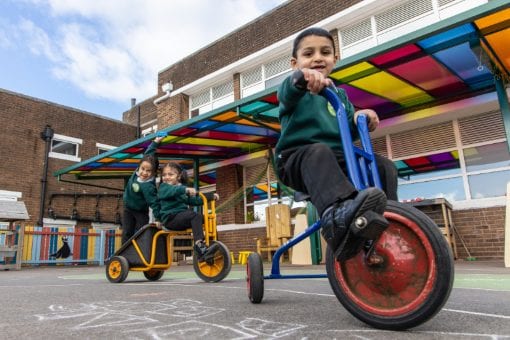 This simple pleasure of just getting outside and moving around, feeling the fresh air will help a little in making them feel better when times are harder. In terms of their physical well-being as well, getting that fresh air as they’re learning, they’re getting a higher oxygen level to their brain, so they’re going to concentrate better. There’s a lot of growing evidence as well now that we think and learn better when we’re moving as well. And you know if they’re moving around, they’re getting daylight, which is more relaxing. They’re getting fresh air, then we’re going to have happier and healthier learners in front of us, because it’s building their self-esteem, they’re more able to learn as well.
This simple pleasure of just getting outside and moving around, feeling the fresh air will help a little in making them feel better when times are harder. In terms of their physical well-being as well, getting that fresh air as they’re learning, they’re getting a higher oxygen level to their brain, so they’re going to concentrate better. There’s a lot of growing evidence as well now that we think and learn better when we’re moving as well. And you know if they’re moving around, they’re getting daylight, which is more relaxing. They’re getting fresh air, then we’re going to have happier and healthier learners in front of us, because it’s building their self-esteem, they’re more able to learn as well.
So physical well-being is really influenced by being outdoors. And that goes hand-in-hand and I’ve already alluded to it, their mental well-being. So we at this time particularly, we need to take some time out to support social and emotional well-being in our young people and for yourselves as educationalists as well. We’re going through a difficult time so we need to take time and space. I said here, you know we could get outside and do circle time outdoors. A nice space, a bit of fresh air, seating appropriate distance apart and it’s more relaxing, it’s calming, people have time to breathe, time to express themselves, so don’t try and do your circle time indoors, squished in the carpet, find a space outdoors that could be used for those daily check-ins. Mental well-being, more broadly speaking as well, is supported through different ways that you can learn more readily outside as well.
So those opportunities for more collaborative learning between peers. They’re entrusted with more responsibility and it tends to be more pupil-lead and more task involvement and then the ego involvement so that they are, the children are actually truly working together, often beyond the eye of the teacher, just really shouldering the learning that’s going on. What you will notice as you go outside more with children as well, is it’s a different kind of rapport with your young people, with your pupils. When you go outside there’s that sort of collective relaxing of the shoulders and a slightly different relationship. A broader relationship with your children, seeing them in a different light and they see you in a different light.
So yes, as I said, I’ve mentioned a few of the many benefits there are to taking your learning outdoors and linking it with the curriculum. There’s many opportunities for curriculum linked learning and my colleague Alex is now going to give you a few concrete examples to take away with you.
Alex
Thank you very much Claire and as you have already been told, my name is Alex and I’m part of the training team for Learning through Landscapes. So normally I would be out and about on the road, visiting lots of lovely schools, to try and get teachers outside as much as possible and it’s only two years since I became the primary teacher myself so I do understand the daily pressures in the classroom, the daily pressures on teaching, let alone with everything that’s happening at the moment as well.
So one of the main things that I remember from being in the classroom is just so many different things being thrown at you all the time, so many different pressures of different subjects that you need to cover, different bits of your curriculum that you’re trying to fit in and never really having enough hours in the day to try and get through everything. I think sometimes that’s why people are reluctant to do outdoor learning because it’s seen as an additional thing, It’s an extra thing to try and fit into an already busy day, but actually if you can bring the two together, so be doing your curriculum you’ve got to cover in the classroom anyway, and do that outside, then it’s not an extra thing, it’s not an extra put on your time and actually, potentially it could save you some time in the long run because you haven’t got to repeat things because the children have actually embedded that learning and they have actually done it physically.
When we start trying to think about our outdoor spaces and natural resources as a resource for learning it can really open up so many different opportunities. Here we’ve got a picture of a stick and a leaf, but actually when we think about them in terms of our curriculum and the different bits of learning that we can get out of those natural resources, there are so many things that you could do with just a stick and a leaf or natural resources. I’m sure lots of you could think of different ways of using them.
We’ve got a few examples here. So those sticks and leaves have turned into 2D or 3D shapes. We’ve got repeated patterns at the top. Stick stick leaf, stick stick leaf, take a picture of that and the children have shown that they understand that concept outside. Down at the bottom there we’ve got sticks and leaves being used as (inaudible) exactly the same as you would potentially do in the classroom. But our sticks are tens and our leaves are ones and so that’s make 34. So exploring place value can be done really simply outside as well.
I think thinking of some of these ways that actually it’s not a big task, it can be done in some small little ways. We’ve got outside natural things being used as story sticks and some imaginative play there. We’ve got a musical instrument and actually a little character that’s made out of sticks and leaves and natural items, but that could then become the stimulus for a character description or for a piece of fiction writing. So there’s lots of ways that actually you can use these different resources to try and get some learning through from outside.
One of the main things that we get asked about as trainers and looking at outdoors for your curriculum is English and maths because actually that is the main sort of bulk of things that we’re spending our time doing, and the outside can be such an amazing stimulus for some writing. If you think about your classic recount writing after a trip or a residential, actually the children’s writing is normally of quite high quality because it’s something that they’ve experienced and that they’re interested in and they understand where their sort of writing is coming from, so it really gives them a purpose for writing.
For example we used to do den building as a persuasive writing unit. So the children would have to build their dens, then they would become estates agents and have to persuade you to come and move into their den. So why was their den more important than anyone else’s? But as you can imagine they were passionate about that and they really wanted to put those details into their writing. You can see some children here doing some cloud gazing which is a lovely way to come up with some descriptive words, a word bank, potentially some poetry, and we could do that by using anything that’s outside in our natural environment, anything that could be used outside and to come up with those different words.
As Claire said as well, the noise levels are different when you take your learning outside. So thinking about could we use the outside for our talk for writing or for role play or for drama. Not only is it going to be less noisy but also for some of your children they feel a bit safer to maybe try some different words or different sentences and actually they’ve got that confidence because it’s not the formal environment of the classroom. So outdoors is a great place to be doing activities like that.
I think it’s important to think about the use of the outdoors for reading as well, so thinking about reading in different locations. If you think where you would read your book for pleasure, you would never go and sit at a desk or on a plastic chair with lots of other distractions going on around you, so it makes sense that if the children can sit, lean against a tree or lie on a tarpaulin or be in a hammock even, then that actually they will take that in more, their comprehension will be better of what they’re reading. And using the outside to explore word classes.
Here we’ve got an activity where the children have found items, different nouns for different letters the alphabet, but you’ve got that whole space for doing nice active games, exploring verbs, action words. What better place to do it than where you’ve got the space for it.
I wanted you to have a little go at an activity. So here we’ve got this is an example of one of our resources that we’ve got online. This is some poetry and what I’d like you to try and do is come up with a sentence in this structure. So a number, then an adjective, some alliteration with a noun. So you can see some different examples there. So maybe have a go at looking out your window and coming up a sentence, and you can see how these sentences could easily be put together to make a little poem. Now if you’re listening to us on Facebook Live you could share your sentence with us, pop that into the comments box, or if you want to make a note of it in your book you can share it with us later or through Zoom.
I will just give you a few seconds to have a go at writing a sentence. You can start to see how that structure can really help use the outdoor space as an inspiration to some of our learning and lots of great different ways you can use that language for then some poetry. So I will move on to have a little think about some maths outdoors.
So again a classic lesson is maybe taken outside is measure. Measuring the perimeter of the playground, the area of the playground, but here we’ve got an example of one of our activities which is ten different ways to measure a tree. And if you don’t have any trees that could be your school building or the fence that’s outside but ten different ways to find the height of the tree and the beauty of that is that actually you then end up with a dataset. So you can then start to work out the average heights of things around your grounds or look at the range of the data and make some large scale bar charts but everything about that maths has a purpose and has a reason for you doing it. So it can be really really powerful.
Anything that you do with counters in the classroom can be done with natural items outside, so again our sticks and leaves, I know I keep coming back to them, and doubling, just counting our leaves and even the start of algebra we’ve got an activity which is looking at substituting different values for those different natural items. I put fractions in there because I just remember that as being a really really difficult concept to teach, but looking at them on a large scale outside or potentially having some tarpaulins and basically folding them in half, physically folding them into quarters, the children then start to really sort of get a physical feel for that concept and that understanding.
I saw a lovely lesson where the children were actually making fraction balls out of sticks. So one big stick that’s our whole, then we find two to make our halves, then we and so on and so on and that’s much more exciting than cutting out the fraction wall and sticking it in our books. So lots of different ways that we can think about that.
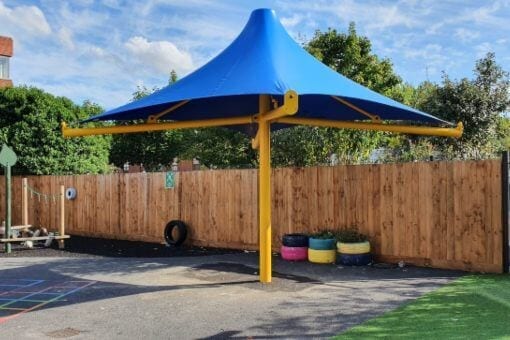 And you can see from this picture here that our playgrounds, our outdoor spaces are full of opportunities for shape and space and angles and things like that. If we look at this picture here of a brick wall, yes, it’s just a brick wall or actually when we start to look at it there’s lots of different maths learning opportunities through there. We’ve got angles, we’ve got right angles, we’ve got perpendicular lines, parallel lines, we could do some counting. We’ve got number lines, tessellation, there’s so many different bits of learning that could come from just that brick wall and I’m sure if you just glanced out of your window now you could probably see some shapes outside or see angles that the branches are making in a tree. And we’ve got a couple of great resources.
And you can see from this picture here that our playgrounds, our outdoor spaces are full of opportunities for shape and space and angles and things like that. If we look at this picture here of a brick wall, yes, it’s just a brick wall or actually when we start to look at it there’s lots of different maths learning opportunities through there. We’ve got angles, we’ve got right angles, we’ve got perpendicular lines, parallel lines, we could do some counting. We’ve got number lines, tessellation, there’s so many different bits of learning that could come from just that brick wall and I’m sure if you just glanced out of your window now you could probably see some shapes outside or see angles that the branches are making in a tree. And we’ve got a couple of great resources.
The math walks and math scavenger hunts which are all around that concept that there are so many elements of maths all around us all the time and opportunities to sort of pick those out and explore those with the children. Some of you might get into this thinking well I don’t have any green space and that’s not a problem. Lots of our resources and activity ideas can be done on a concrete playground. You can see here these children of exploring time and clock faces. They are physically becoming the hands of the clock and moving around that space on their playground, and even just with some chalk as Claire was talking about earlier, some mark making, using that for your spelling or phonics or blank number lines, the children can physically move up and down the number line even if you’re getting into negative numbers. And if anybody tuned in to our blue sparks webinar a couple of weeks ago, which if you didn’t you can watch it on our YouTube, but that’s a great concept that can be explored on a concrete playground. It doesn’t need to have a green space. That can be done and tied in to lots of lots of different parts of your curriculum. So there’s lots of ideas out there for them non green spaces as well.
I think we’re conscious that some people will be potentially when we go back to school, starting doing some outdoor learning for the first time, so we thought we’d just have a think about some important things, top tips. Because for some people it will be quite new. And Mary will talk some more about some places thinking about where to gather your group and thinking about how to collect your group back in.
Is that going to be a signal or a musical instrument or a whistle, but thinking, making sure you’ve thought about those things before you go outside. And as Claire was saying about the potential of a pupil pack, so they have a whiteboard and a pencil and a piece of chalk and a sit map maybe, everything that they need to be able to go and do their session or their lesson outside. And making sure that you’ve got things that you need as well, maybe in a little bag or a backpack.
Ways how are you going to record this brilliant learning that’s happening outside and that’s something that our early years colleagues are so used to and so brilliant at. Taking photos of the children’s learning, recording it in that way, and something that’s probably going to have to be thought about as potentially we’re doing more of this moving forward. The picture there is just of some natural resources, so those are just little wooden disks that have numbers on or letters and sounds, which are a nice generic resource that you could make yourself and be able to use those for lots of different hunts or relays and things outside. So and something that’s quite useful to try and start to think about. But don’t forget that we’ve got resources and activity ideas for all different aspects of the curriculum and we are here to help and to try and give people more ideas of how to be doing our curriculum outside.
But for now I’ll pass back over to Mary who’s just going to talk a little bit more about how we can do some outdoor learning within secondary schools as well.
Mary
Okay, thank you Alex. Bear with me. Sorry about this, I’m having a little bit of a problem. There we go. Okay so now I’m going to focus a little bit more on secondary schools. Apologies if you can’t see me, I’m not sure what’s happened to my video but it won’t work, but that’s not the important bit so I hope you can see the slides okay. And this will be also, I noticed on some of the questions there were some comments and questions from people talking upper primary as well and there’ll be a lot that kind of, of common things that link the two obviously as well.
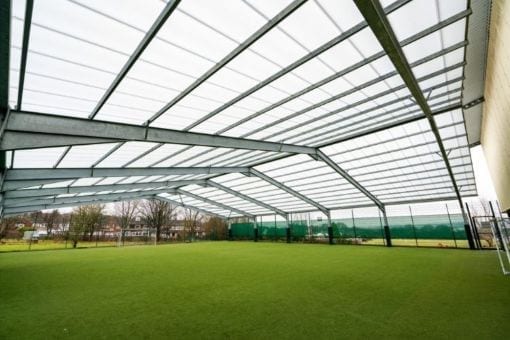 In secondary schools you’ve got some advantages and disadvantages. One of the advantages most secondary schools will have is that they tend to have more space than in primary schools. But you also have more pupils. And obviously sometimes, I’m a PE teacher by training, that’s my background and I do understand that as many PE teachers have some sense of ownership maybe of those outside spaces. It’s their domain, but in these circumstances it’s really important that everybody kind of works together and shares those space and uses it for other areas other than PE, but those PE teachers also will have expertise that you can draw upon. They are used to taking lessons outside, they are used to taking pupils outside, so do use that expertise. Ask them to share with you the techniques they use, because a lot of secondary school teachers are not so used to taking lessons outside as much as primary teachers are.
In secondary schools you’ve got some advantages and disadvantages. One of the advantages most secondary schools will have is that they tend to have more space than in primary schools. But you also have more pupils. And obviously sometimes, I’m a PE teacher by training, that’s my background and I do understand that as many PE teachers have some sense of ownership maybe of those outside spaces. It’s their domain, but in these circumstances it’s really important that everybody kind of works together and shares those space and uses it for other areas other than PE, but those PE teachers also will have expertise that you can draw upon. They are used to taking lessons outside, they are used to taking pupils outside, so do use that expertise. Ask them to share with you the techniques they use, because a lot of secondary school teachers are not so used to taking lessons outside as much as primary teachers are.
So if you’re not used to it, talk to the your colleagues who are. As I say PE teachers, maybe geography teachers and even science teachers. So use their expertise to help you with the best techniques for getting outside.
You have older pupils here and there’s been a lot of talk I know about the idea of very young pupils going back and not being able to distance from each other and not understanding the issues and at least in secondary schools your pupils are more likely to understand that they need to stay apart. Saying that, they’re also probably a group that likes to take risks and not always do what you may want them to do. So what you need to do is think about how do we make that social distancing as easy for them as possible? Do we set out the spaces and I’ll talk more about spaces later, so that it’s automatic for them to go outside and sit further apart? And just as Alex was talking about in primary schools, with the curriculum pressures in primary schools, that is certainly no less in secondary schools, so there’s a lot there for people to think about. And when pupils are returning they’re going to be coming in back to school at different stages in their learning as well. Some of them will have really enjoyed just being at home and being able to get on with work. Others will have done very little and they’ll all be coming back from different situations at home. So we do understand this is not an easy situation that you’ll be returning to. And some of you, as we said before, are already working with pupils in schools. But we believe school grounds are one way to help you work safely and effectively when more pupils do return, and also with the smaller groups that you’re working with now.
So, thinking about teaching outside, probably one of the things that teachers worry about most is kind of discipline and distractions outside. Are pupils going to kind of suddenly look over in a direction or be distracted by something that’s happening? Well you shouldn’t ignore those things because they’ll want to look at them even more, so you know take a second, look at a unusual sight maybe of an aeroplane going overhead, and then acknowledge it and return to your lesson as you were before, much better than just trying to ignore it.
But we will also find that discipline may well actually be a lot better outside. Some of those pupils who struggle sitting at a desk all day may actually thrive outdoors and we’ve seen that many times from experienced and inexperienced teachers too. Being surprised how well their pupils behave outside. And another element of that is the distractions that some pupils are, those pupils that talk a lot inside and distract the other pupils that want to get on with things.
Well we’ve spoken to secondary pupils themselves and they said, actually that’s great because outside we’re not as disturbed as much by other pupils making a noise because you know pupils are literally further away from them. So that can be a really useful thing. In fact discipline and distractions can be better outside. When you teach outside, almost automatically you are more creative with the approaches that you take to teaching and learning, and this will help to motivate many of your students, especially those as I say who aren’t the best at sitting inside, sitting at a desk and not moving all day, and they’re not going to be doing that as they leave school, those aren’t the kind of jobs they’re going to do and it’s great that you will see some of those young people thriving outdoors and suddenly coming into their own.
Another issue that everybody will talk about is planning and time. And as I think Claire or Alex, I can’t remember whether it was Claire or Alex said, we’re not trying to add huge amounts of extra work, what we’re trying to do is saying this is what you’re teaching already, how can we think of it in a different way? And obviously the first time you do that it will take more time and more planning and like many things in the situation that we’re in now, you will be doing things that you may never have done before, but after a while you get used to them and that becomes easier and takes less time each time you do it.
So what can you actually teach outside? And probably you think straight away well we can teach some science outside, maybe some geography, doing some fieldwork and obviously PE springs to mind, but don’t limit yourselves just to those subjects. This image here is of a student looking at loci and learning about loci which seems so incredibly relevant when you think about social distancing at the moment and how far away you need to be from people, and it relates very well to the topic of loci.
But maths is fantastic outside. There’s so much data that you can gather and analyse and create. If you’re thinking of things like how do we calculate π? Going outside and creating large circles outside and measuring them is much more effective than trying to do that in a small book and you can understand what is π, what does it mean and what’s it all about and actually go out and calculate π. And of course the larger you do things, the lesser the error will be, because everything is on a larger scale so you get that lesser scale of error when you’re working on a big scale.
Other subjects that you might want to think about teaching outside, obviously sciences are great and not just biology. Think about maybe in physics, measuring the speed of sound. Think about in chemistry looking at weathering. What about in citizenship, thinking about how you might plan changes to your grounds. Finding out what kind of organizations are there to support you in teaching outside or supporting you in developing your grounds for wildlife. So lots of different subject areas there.
We’ve got lots of resources to help you but we also would encourage you to think about the techniques you may be using in the classroom, can you transfer those to outside? Are there things that you do inside that you think yes I can go and do that straight away outside, it really doesn’t matter. You might use Power Point a lot, well what about instead printing off some of those slides and hanging them up at spaces around your grounds and getting pupils to walk between them and studying from them individually, and then bringing that information back to the group. So just looking at different ways, different techniques that may be suitable across a range of curriculum subjects. So we can help you with some of those things as well.
We do know that you are having to implement the curriculum. We understand that and that is hard and it needs to be done, and when you’re thinking about that, when you’re doing your planning normally, I’m sure you think, what, why and when, but here’s an extra W to add in. What about where? Is the inside the best place for this bit of learning or is there potential for taking that lesson outside? And it may be that you take part of a lesson outside to start with as you build your confidence and pupils get used to being outside. The more they go out and the more this is seen as proper learning outside it’s not just having fun outdoors it’s proper learning, the more often you do that and the more you make it a regular part of the learning, the better it will be for you and for them.
So if you’ve decided you want to do some teaching outside, maybe you need to start thinking about the space you’ve got to do that in. So the first thing really to think about is have a think about your site. There may be lots of areas that you’ve never been to. You are likely as a secondary school to have larger spaces, whether that is a larger playing field or areas of asphalt. So think about that, use that, can we have different groups working at different areas of the grounds at the same time, and that will require planning and talking between departments, but you may also have kind of niggly little spaces between buildings.
Often when schools are built it seems that buildings are put up somewhat at random and some strange spaces are made in between. Well these may be really useful little spaces as gathering spaces for pupils to come to, but do also think about if you are taking learning outside into those spaces, what is overlooking those spaces? Are you going to disturb other pupils that are trying to work inside, so you just need to think of some of the practicalities as well. How many pupils are using your space and also are there things that are already happening outside that you need to take account of? So having the spaces together is really important and really useful. It means that you can say right let’s meet at that space. You’ve got somewhere to come back to if you send pupils off undertaking a task or a challenge, then they can come back and gather together.
Now obviously with social distancing you need to be aware that you’ve got enough space and how you use that and how you organize it. Can you extend spaces that you’ve already got rather than starting from scratch? Do you have cover to that space because not every day, although it does seem it at the moment, not every day is going to be sunny and bright. And obviously if you don’t have those spaces already, there are things you can do maybe to add some temporary gathering spaces before, in the end maybe you might decide to make them permanent and there’s lots of ways you can do that, taking things outside, creating spaces, using tarpaulins to create some shade or some shelter.
We’ve got here images of straw bales that are taken outside. Now they won’t last forever but they’re not expensive and they are quite heavy so they won’t get moved around too much and they will get pulled to pieces but that doesn’t matter, you bring something else out when they’ve kind of had their day as it were.
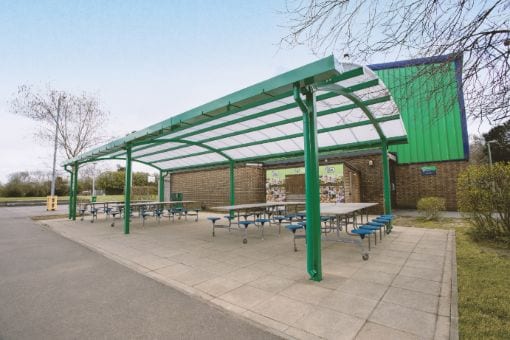 So think about the numbers using the spaces. Think about the direction of the sun at different times of day because that will have an impact as well. Think about shade. Think about shelter. All those things are really important and they’re things that the pupils themselves can investigate and be part of their learning. This is a really good opportunity for them to get involved in designing those spaces that they can learn in as well, some lovely design and technology coming in there.
So think about the numbers using the spaces. Think about the direction of the sun at different times of day because that will have an impact as well. Think about shade. Think about shelter. All those things are really important and they’re things that the pupils themselves can investigate and be part of their learning. This is a really good opportunity for them to get involved in designing those spaces that they can learn in as well, some lovely design and technology coming in there.
So that’s just a start of an overview, looking at how you might be starting to think about taking your lessons outside. There’s so much more that we could talk about and we’ve got a limited time to do it and we did want to leave some time for some questions, so I’m going to hand over to other members of the team – to Claire who you heard at the start to host the questions and see what you’ve been asking.
Claire
Okay thank you very much, thank you everybody there. Thank you all who are watching for your comments and questions as we were going along. As always with this sort of thing we have more questions than we are probably ever going to have the time to get through, so we’ll do our best to get through a few for you now.
So the first one we’re going to start with is that we had a question of whether we can provide any reference for evidence that shows that the virus, or COVID-19, is less when taken outdoors?
Mary
And yes I would said I would answer that. We’re taking this information directly from the Department for Education’s website and advice, and that they are saying that transmission levels are likely to be lower when you’re outside and if you kind of do some searching you will find there’s quite a number of studies that are taking place at the moment looking at the transmission rate inside and outside and obviously if you are outside, that virus will get, those droplets in the air may get blown away, you’re in a much larger space so they’re likely to get diluted.
All those kind of things, you’re less likely to get everybody be touching the same pieces of equipment on the same places and so you’re less likely to transmit from that side as well. So that’s the kind of thing that we’re being told, but as I say, it’s on the Department for Education website that transmission is likely to be less outside.
Claire
Okay thank you very much Mary. Another question we’ve had through is any suggestions for the use of woodland areas or for those that have forest school type setups on their sites?
I’ll start the ball rolling with that so I saw that question coming through and it’s sort of asking about whether you can do outdoor learning in the same space you can do forest school, and I would say absolutely and I would sort of refer back to the slide I was talking about, place led learning, a space is defined by the people and the activity that you’re doing there. The space itself isn’t always forest school, it’s whatever is happening at that point and the way that you manage that is through the routines and the systems and the contexts that you apply as the educator, or the forest school leader. So the two things can happily coexist and actually I wouldn’t see them as completely separate as well as completely mutually exclusive. Maybe observe some of the learning that is happening during free play and that if you can harness some of that learning and then link it in with curricular areas when you’re doing some formal outdoor learning in that same space, then it’s just a continuum for the children as well. So I suppose there’s two sorts of ways of looking at it.
I don’t know if the others had any other thoughts on it?
Alex
Yes, I think I would completely agree and I think sometimes there’s so much learning that happens in sort of a traditional maybe forest school section of learning, that then if there’s a missed opportunity to then follow that up in the classroom as well, you know if children have gone to forest school and lit fires for example, the writing that they did about that would be amazing or if you asked them to write instructions about that it would be really good because it’s something that they’ve experienced, so I think absolutely the two can be blended together really nicely.
Claire
Thank you very much okay and we will go for, I think we’ve probably got time just for one more.
This is probably a question we’re all wondering out there, is how do we keep to social distancing when we’re outdoors?
Mary
Shall I start with that one?
Claire
You can start it Mary.
Mary
Okay yes, I mean I think one thing to say is that we are not experts on the health side of these things. So but, the fact that there is more space outside obviously in some ways will make it easier. But we’re not the experts on that and I think everyone will be learning new ways as they try and explore. It is not going to be easy, there will be advice from the government, there is advice from the government on how to stay apart and how to consider moving indoors and outdoors because there’s those pinch points that are going to be difficult as well. So look at the advice that is being given about how you deal with those things inside a classroom, and start to translate those to outside as well.
Claire are you wanting to add anything to that?
Claire
I suppose as well, what we can work with you on is we have experience and years of experience in looking at how schools can build outdoor learning routines as well. So the social distancing element it’s just another layer for building into the routine with your children. So I mean the first thing I would probably do with children in front of me, is look at what is two metres children? What does two metres look like? And actually extract the learning from that so that they are aware and they’ve embodied the understanding of what two metres is, what that looks like.
You know when we look at routine building and gathering spaces, you can do that temporarily with chalk marking. So your chalk markings would be two meters separate or you can do it with rope but put your two meter markings along your rope circle or if you are going to use some kind of log stump seating or something like that, maybe each individual has an identified seat and you know in advance that they are two meters apart.
So there’s lots of strategies that we can draw upon from our experience in outdoor learning and support you in individual settings but yes, we’re learning on the way as well is the thing, so yes that’s probably me.
Mary
And I think it’s worth saying if some of you do find methodology and techniques that really work, please let us know because then we can share those with other people as well and we’re learning as much as you are, so anything that you find works, there are some great ideas there from Claire but if you are trying things and you’ve discovered the way that works, please let us know because then we can share it with others.
Claire
Okay that is lovely. I’m afraid that is all we have time for everybody, but thank you ever so much to the team and the panellists today. Thank you to those who are watching as on Zoom and those on Facebook. If you would like to get in touch with us you can follow us on Facebook and Twitter. You can also get in touch directly with us if you’d like to as well. But just to say that’s all for now, take care of yourselves, stay safe, goodbye.
